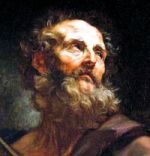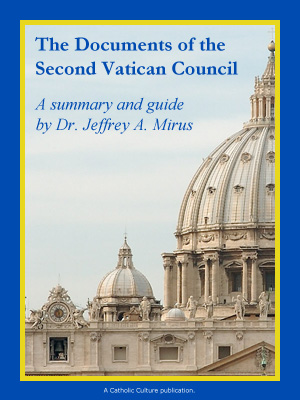Pope’s rebuke to Americans; prospects for the conclave
By Phil Lawler ( bio - articles - email ) | May 30, 2022
What message did Pope Francis send to the American Church by naming Bishop Robert McElroy to the College of Cardinals? How will his latest choices shape the prospects for the next papal conclave? Which other choices deserve a second look, and which prelates were conspicuously absent from the Pope’s list? Let me answer those questions, one by one.
The message to American Catholics.
Some analysts have suggested that the choice of Bishop McElroy is a slap at the US bishops’ conference. It is more than that; it is a whole series of slaps:
- A slap at the full US Conference of Catholic Bishops (USCCB), which rejected Bishop McElroy’s bid to scuttle their mild statement on voters’ responsibilities—and at the former president of the USCCB, Cardinal Daniel DiNardo, who was forced to rebuke the cantankerous Bishop McElroy when he pressed the argument too aggressively.
- A slap at Archbishop José Gomez of Los Angeles, the head of the largest archdiocese in the US, who is still waiting for his red hat, in what can no longer be dismissed as an oversight. Archbishop Gomez is not only the current president of the USCCB; he is also the metropolitan of the region in which Bishop McElroy serves.
- A slap at the Hispanic Catholics who make up a majority of the Los Angeles archdiocese, and are still waiting anxiously to celebrate the elevation of a Hispanic cardinal.
- And of course a slap at Archbishop Salvatore Cordileone, who made headlines last week by taking the stand that Bishop McElroy has sharply criticized, barring Speaker Nancy Pelosi from Communion—and for the many American bishops (not to mention lay Catholics) who have supported Archbishop Cordileone’s disciplinary action.
The tensions between Pope Francis and the US bishops’ conference have become increasingly evident. By giving red hats to prelates far to the left of the USCCB consensus—Cupich, Tobin, and now McElroy—the Pontiff is sending an unmistakable signal about his personal preferences.
The shape of the next papal conclave
Unlike his immediate predecessors, who elevated cardinals representing a broad range of theological and ideological perspectives, Pope Francis unabashedly promoted his own favorites. He has now chosen a majority of the cardinals who will elect the next Roman Pontiff.
There are now 117 cardinals under the age of 80, and thus eligible to vote in a conclave. (Cardinal Norberto Rivera of Mexico City will celebrate his 80th birthday next week, and drop off that list.) With the Pope’s naming of 16 new electors, barring unexpected changes, after the conclave there will be 132 cardinal-electors, of whom Pope Francis will have chosen 83: a figure very close to the two-thirds majority required for a papal election.
However it would be premature to assume that the results of the next conclave will necessarily reflect the wishes of the current Pontiff. Even if “conservative” cardinals are a minority at the next conclave, they will be numerous enough to block the election of a cardinal from the “progressive” wing of the College.
More to the point, although many of the cardinals elevated by Pope Francis have been undoubtedly progressives, many others are unknown quantities. The Pope has selected a number of new cardinals from relatively obscure dioceses, and he has continued that pattern with his latest choices, including prelates from East Timor, Ghana, Singapore, and Mongolia. Certainly these new electors come from background markedly different from those of the old College of Cardinals; it does not follow that their views on Church doctrine and discipline will be markedly different.
Furthermore, Pope Francis has raised the “X factor” of the next conclave substantially, by abandoning the practice of inviting the world’s cardinals to stay in Rome for a day or two, before or after each consistory, to discuss Church affairs. Those meetings enable cardinals to appraise each other, with an eye to the next election. In August, at the first such general meeting in seven years—occurring at a time when the Pope’s health is becoming a topic of open conversation rather than furtive whispers—the groundwork for the next conclave will begin.
Other notable choices—and omissions
Once again Pope Francis has rewarded his loyal allies, choosing to bestow red hats even on a few prelates who have drawn criticism for their handling of sensitive issues. Archbishop Fernando Vergez Alzaga, the president of the Vatican city-state Governorate, is a member of the Legionaries of Christ, with ties to the notorious Marcial Maciel. Bishop Oscar Cantoni of Como, Italy, has had his name linked to two different Vatican trials.
A more interesting and unusual case is that of Bishop Peter Okpaleke, who was named Bishop of Ahiara, Nigeria by Pope Benedict XVI in 2012. Bishops of that diocese violently objected to the choice, because the Pope’s choice was a member of a rival tribe, and joined with lay Catholics to block the new bishop from taking office. For several years the stalemate persisted and the diocese was without a bishop. Finally in 2018, Bishop Okpaleke resigned his post “for the good of the Church,” and Pope Francis appointed an apostolic administrator to the Ahiara diocese. In 2020, the Pope created the new Nigerian diocese of Ekwolobia, and named Okpaleke its first bishop. Now, having once been disdained by his countrymen, Bishop Okpaleke has been chosen for the honor of a cardinal’s red hat—over more prominent Nigerian prelates such as Archbishop Alfred Martins, who has been Archbishop of Lagos for ten years; and Archbishop Ignatius Kaigama, who was named by Pope Francis in 2019 as Archbishop of Abjua, the nation’s capital.
Pope Francis has overthrown the assumption that certain large archdioceses are “cardinalatial sees,” whose leaders should expect red hats. Still it is surprising that the list of his choices did not include the archbishops he himself has appointed to Milan, Genoa, Naples, Turin, Paris, Bourdeaux, Berlin, Prague, Seville, Dublin, Edinburgh, Gniezno, Krakow, Seoul, and Hong Kong.
But the most noteworthy omission from the Pope’s list is the name of Major Archbishop Sviatoslav Shevchuk of Kiev. At a time when the Ukrainian people are suffering, and Shevchuk is a focal point for national solidarity, a red hat would be an important sign of papal solidarity.
The Ukrainian Catholic Church—which is by far the largest of the Eastern-rite churches in communion with the Holy See—has long sought recognition of their spiritual leader as a Catholic Patriarch. Smaller Eastern Catholic churches (Chaldean, Coptic, Maronite, Melkite) have been granted that recognition. Instead the Ukrainian Catholic leader has been given the unusual title of “Major Archbishop”—in large part because the recognition of a Catholic “Patriarch” in Ukraine might antagonize the Russian Orthodox Church, which still considers Ukraine as part of its “canonical territory.” Now that the Orthodox bishops of Ukraine, including those previously loyal to Moscow, have declared their wish for independence, the time is ripe for the Vatican to honor a Ukrainian Catholic leader.
Technically a cardinal is a senior clergyman of the Roman Catholic Church, and so the appointment of cardinals from other Catholic churches is irregular. But Popes have overlooked that problem for years now, honoring Eastern prelates with red hats, and in fact Major Archbishop Shevchuk’s predecessors in Kiev was the late Cardinal Lubomyr Husar. By awarding a red hat to Archbishop Shevchuk, Pope Francis could have sent several strong messages: of solidarity with Ukraine, of respect for the Eastern churches, of rebuke to Moscow.
All comments are moderated. To lighten our editing burden, only current donors are allowed to Sound Off. If you are a current donor, log in to see the comment form; otherwise please support our work, and Sound Off!
-
Posted by: jalsardl5053 -
Jun. 01, 2022 8:30 PM ET USA
An expected result from one well versed in Latin American dictatorial politics.
-
Posted by: Fr Eric Lepanto -
Jun. 01, 2022 4:36 PM ET USA
I agree with your assessment. McElroy receiving the red hat and Gomez still without is grave scandal to the Church.
-
Posted by: JIMandEM -
Jun. 01, 2022 9:17 AM ET USA
Mr. Lawler; Great Column, filled with Truth! Many of us Traditionalists, we believe that Bergoglio wants a Schism, and he is five cardinal votes from achieving his victory. What a terrible excuse for a Pope he is. Lord help us.
-
Posted by: Sciamej1913 -
May. 31, 2022 8:34 PM ET USA
One contines to wonder as to who this Pope listens to. For the average Catholic who is practicing and obeying the laws of the Church, one finds it hard to understand. it seems that the Church model has been shaken for it never to return to any modicum of where it was...and it was not a failure at all. Instead we are left with confusion, confusion as to those who are appointed Cardinals and confusion as to the tenets that we held firm to all of our lives. How can this happen!
-
Posted by: rghatt6599 -
May. 31, 2022 3:12 PM ET USA
McElroy objects to Church teaching on abortion, communion for the divorced and remarried, homosexuality and the priesthood - he supports female deacons. There are unanswered questions about his handling of clerical abuse cases, including the McCarrick scandal. If the Vatican’s McCarrick Report where not a preemptive effort against a real investigation the advancement of men like McElroy would be impeded. As in Germany there seems to be no consequences for heterodox prelates. The heterodox are now favored sons.
-
Posted by: Cinciradiopriest -
May. 30, 2022 6:55 PM ET USA
These choices are indicators of where Pope Francis wants the Church to go. I do not believe that it bodes well for the faithful who want to simply live out their faith in Jesus Christ under the Church he established. The Holy Father is trying to turn the Church into a political NGO. I truly believe God will have the final word. Another lesson in patience, exile and cunning.
-
Posted by: miketimmer499385 -
May. 30, 2022 6:18 PM ET USA
Fr. Gerald Murray, in his just released book "Calming The Storm," has identified the faithful laity as a major element in the correction of misguided roads taken by bishops in the past. We should not think that our loud and clear disapproval in the present will fall on deaf ears. Our prayers to God will be answered in his time, and our right and respectful use of direct confrontation may even be effective in our time. Financial support can be judiciously employed to emphasize disapproval.








